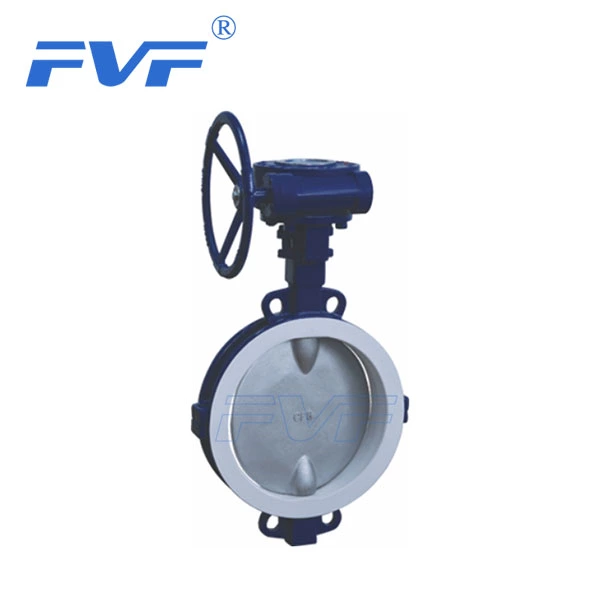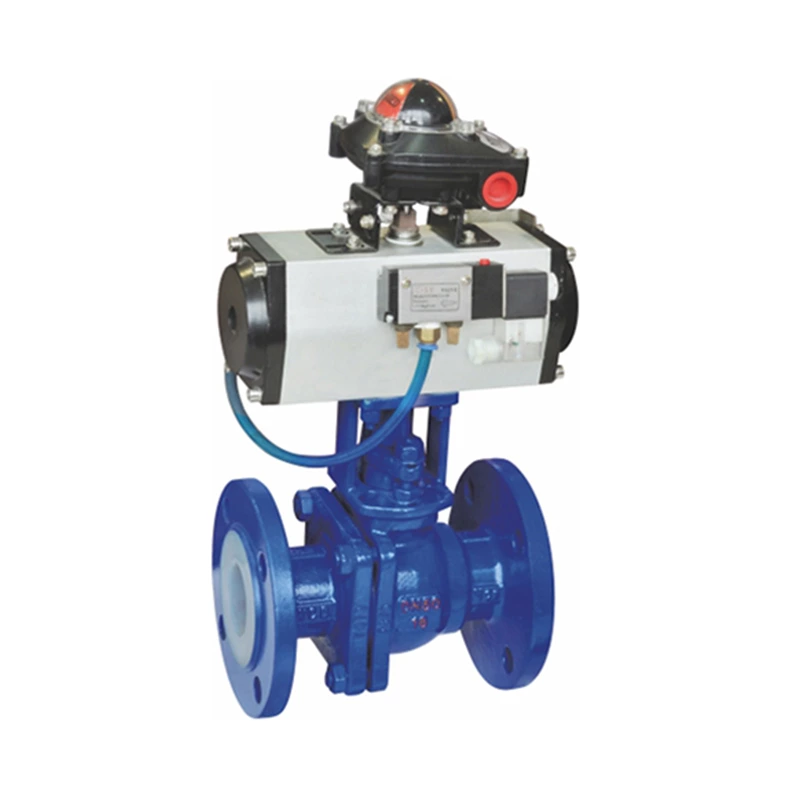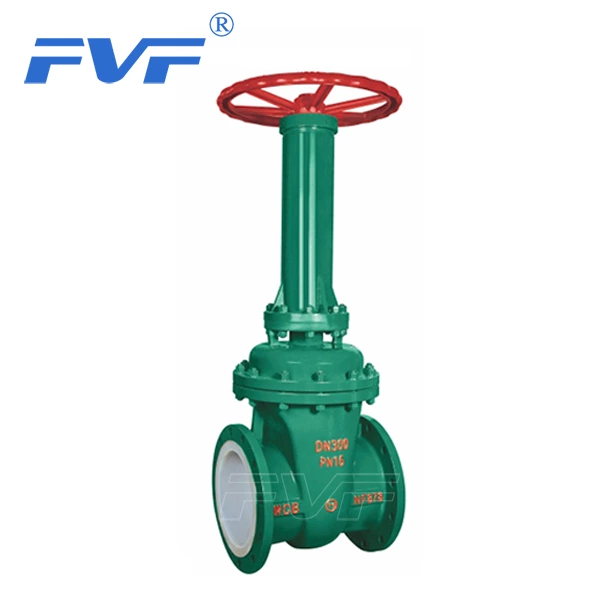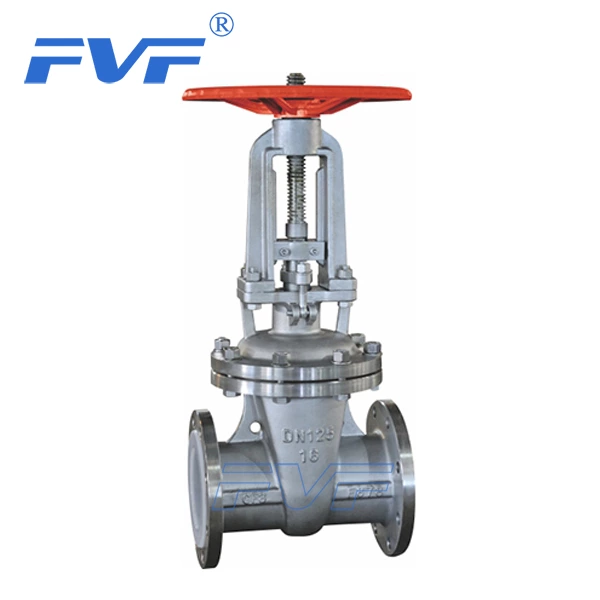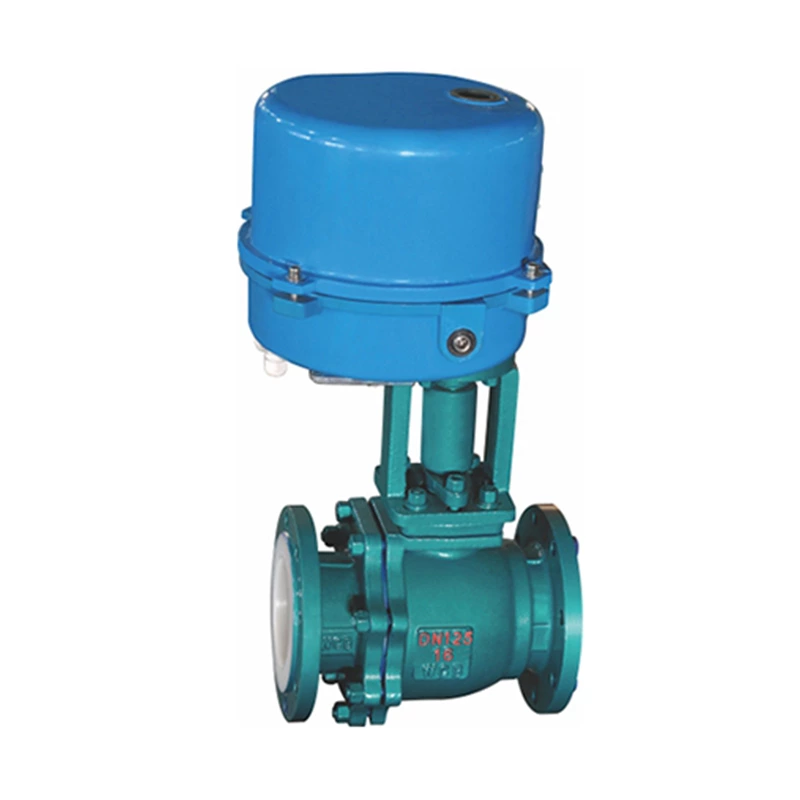Valve Corrosion Is One Of The Important Factors Causing Valve Damage
Lined Valve Corrosion is the destruction and deterioration of materials under the influence of various environments. Metal corrosion is mainly caused by chemical corrosion and point chemical corrosion, while non-metallic material corrosion is generally caused by direct chemical and physical effects.
Valve corrosion is one of the important factors causing valve damage. Therefore, anti-corrosion protection is the first consideration in the use of valves.
1. Forms of valve corrosion
There are two forms of metal valve corrosion, namely uniform corrosion and local corrosion. The speed of uniform corrosion can be evaluated by the annual average corrosion rate. Metal materials, graphite, glass, ceramics and concrete are divided into 4 grades according to the corrosion rate: corrosion rate less than 0.05mm/a is excellent; corrosion rate between 0.05~0.5mm/a is good; corrosion rate between 0.5~1.5mm/a is still usable; corrosion rate greater than 1.5mm/a is not suitable. Valve sealing surface, valve stem, diaphragm, small spring and other valve parts generally use first-grade materials, valve body, valve cover and other valves are suitable for second-grade or third-grade materials. For valves used for high-pressure, highly toxic, flammable, explosive and radioactive media, materials with low corrosion are selected.
1. Uniform corrosion
Uniform corrosion is carried out on the entire surface of the metal. For example, a protective film is produced by stainless steel, aluminum, titanium, etc. in an oxidizing environment, and the metal state under the film corrodes evenly. There is also a phenomenon that the metal surface corrodes and peels off, which is the most dangerous corrosion.
2. Local corrosion
Local corrosion occurs at a local location of the metal. Its forms include pitting, crevice corrosion, intergranular corrosion, delamination corrosion, stress corrosion, fatigue corrosion, selective corrosion, wear corrosion, cavitation corrosion, friction corrosion, hydrogen corrosion, etc.
Pitting usually occurs on metals with a passive film or protective film. It is due to defects on the metal surface. The active ions in the solution that can destroy the passive film locally damage the passive film and extend into the metal to form pits. It is one of the most destructive and hidden corrosion forms of metals.
Crevice corrosion occurs in environments such as welding, rivets, gaskets or sediments. It is a special form of pitting corrosion. The prevention method is to eliminate the crevice.
Intergranular corrosion is to penetrate into the metal from the surface along the grain boundary, so that the grain boundary is a mesh corrosion. In addition to the precipitation of impurities at the grain boundary, the main cause of intergranular corrosion is improper heat treatment and cold processing. Chromium-poor areas are easily produced on both sides of the weld of austenitic stainless steel and corroded. Intergranular corrosion of austenitic stainless steel is a common and most dangerous form of corrosion. Methods to prevent intergranular corrosion of austenitic stainless steel valve parts include: "solid solution quenching" treatment, that is, heating to about 1100℃ and water quenching, selecting austenitic stainless steel containing titanium and niobium, and carbon content below 0.03%, to reduce the generation of chromium carbide.
Delamination corrosion occurs in the layered structure, the corrosion first develops vertically inward, and then corrodes the material parallel to the surface, and under the expansion force of the corrosive material, the surface is layered and peeled off.
Stress corrosion occurs when corrosion and tensile stress act together to produce cracks. Methods to prevent stress corrosion; through heat treatment to eliminate or reduce the stress generated in welding and cold processing, improve the unreasonable valve structure, avoid stress concentration, and use electrochemical protection and spray anti-corrosion coatings. Add corrosion inhibitors, apply compressive stress and other measures.
Corrosion fatigue occurs in the joint action of alternating stress corrosion, causing metal rupture. Heat treatment can be performed to eliminate or reduce stress, surface shot peening, and electroplating of zinc, chromium, nickel, etc., but it should be noted that the coating should not have tensile stress and hydrogen diffusion.
Selective corrosion occurs in materials with different components and impurities. In a certain environment, some elements are corroded and leached, and the remaining uncorroded elements are sponge-like. Common examples include brass dezincification, copper alloy dealuminization, and cast iron graphitization.
Wear corrosion is a form of corrosion caused by the alternating wear and corrosion of fluids on metals. It is a common type of corrosion in valves, and this type of corrosion mostly occurs on sealing surfaces. Prevention methods: Select corrosion-resistant and wear-resistant materials, improve structural design, and adopt cathodic protection.
Cavitation corrosion, also known as cavitation and cavitation, is a special form of wear corrosion. It is a bubble generated in the fluid. When it bursts, it generates a shock wave with a pressure of up to 400 atmospheres, which destroys the metal protective film and even tears the metal particles. Then it corrodes into a film, and this process is repeated, causing metal corrosion. To prevent cavitation corrosion, you can choose cavitation-resistant materials, high-smoothness machined surfaces, elastic protective layers, and cathodic protection.
Friction corrosion is the damage caused by vibration and sliding of the contact surface when two parts in contact with each other are subjected to loads at the same time. Friction corrosion occurs at bolted joints, at the joints between valve stems and closing parts, between ball bearings and shafts, etc. It can be protected by applying lubricating grease to reduce friction, phosphating the surface, selecting hard alloys, and using tile spraying or cold processing to increase surface hardness.
Corrosion is the damage caused by the diffusion of hydrogen atoms generated in chemical reactions into the metal, and its forms include hydrogen blistering, hydrogen embrittlement and hydrogen corrosion.
High-strength steel and steel containing non-metals are prone to hydrogen blistering. Hydrogen blistering is easy to occur when petroleum contains sulfides and hydrides. Bubbling can be prevented by using non-cavitary calm steel instead of boiling steel with cavities, using rubber and plastic for protection, and adding corrosion inhibitors.
The lattice in high-strength steel is highly denatured. After hydrogen atoms enter, the lattice strain is greater, causing financial embrittlement. Alloy steel containing nickel and lead should be selected, and high-strength steel with high hydrogen embrittlement should be avoided. Hydrogen embrittlement should be avoided or reduced during welding, electroplating, and pickling. When hydrogen enters the metal under high temperature and high pressure, it will react chemically with a combination of elements and cause damage, which is called hydrogen corrosion. Austenitic stainless steel is completely resistant to high temperature hydrogen corrosion.
3. Non-metallic corrosion
Non-metallic corrosion is the same as metal corrosion. Most non-metallic materials are non-conductors and generally do not produce electrochemical corrosion, but purely chemical or physical corrosion, which is the main difference from metal corrosion. Non-metallic corrosion does not necessarily cause weight loss but often weight gain. Weight loss is the main cause of metal corrosion. Many non-metallic corrosions are caused by physical effects, while physical effects of metal corrosion are extremely rare; non-metallic internal corrosion is a common phenomenon, while metal corrosion is mainly surface corrosion.
After the metal material comes into contact with the medium, the solution or gas will gradually diffuse into the interior of the material, causing a series of corrosion changes in the non-metal. Depending on the type and variety of the non-metallic material, the corrosion forms are different. The forms of corrosion include dissolution, swelling, bubbles, softening, decomposition, discoloration, deterioration, aging, hardening, fracture and other phenomena. However, from a comprehensive point of view, the corrosion performance of non-metallic materials is much better than that of metal materials, while the strength and temperature resistance of non-metallic materials are lower than those of metal materials.
2. Anti-corrosion of metal valves
Electrochemical corrosion corrodes metals in various forms. It not only acts between two metals, but also produces potential differences due to the solubility difference of the solution, the solubility difference of oxygen, and the slight difference in the internal structure of the metal, which aggravates the corrosion. Some metals are not corrosion-resistant in themselves, but they can produce a very good protective film after corrosion, that is, a passivation film, which can prevent the corrosion of the medium. It can be seen that in order to achieve the purpose of anti-corrosion of metal valves, one is to eliminate electrochemical corrosion; the second is to produce a passivation film on the metal surface when electrochemical corrosion cannot be eliminated; the third is to use non-metallic materials without electrochemical corrosion instead of metal materials. Here are several anti-corrosion methods.
1. Select corrosion-resistant materials according to the medium
In the section "Valve Selection", we introduced the medium applicable to the commonly used materials for valves. This is just a general introduction. In actual production, the corrosion of the medium is very complicated. Even if the valve material used in the same medium is the same, the concentration, temperature and pressure of the medium are different, and the corrosion of the medium to the material is also different. For every 10°C increase in the medium temperature, the corrosion rate increases by about 1 to 3 times. The concentration of the medium has a great influence on the corrosion of the valve material. For example, lead is very corroded in sulfuric acid with a low concentration. When the concentration exceeds 96%, the corrosion rises sharply. On the contrary, carbon steel is most corroded when the concentration of sulfuric acid is about 50%. When the concentration increases to more than 6%, the corrosion drops sharply. For example, aluminum is highly corrosive in concentrated nitric acid with a concentration of more than 80%, but it corrodes more severely in medium and low concentrations of nitric acid. Although stainless steel is highly resistant to dilute nitric acid, it corrodes more severely in concentrated nitric acid with a concentration of more than 95%.
From the above examples, it can be seen that the correct selection of valve materials should be based on the specific situation, analyze various factors affecting corrosion, and select materials according to the relevant anti-corrosion manual.
2. Use non-metallic materials
Non-metallic materials have excellent corrosion resistance. As long as the temperature and pressure of the valve meet the requirements of non-metallic materials, it can not only solve the corrosion problem, but also save precious metals. The valve body, valve cover, lining, sealing surface and other common non-metallic materials are made of non-metallic materials. As for the gasket and filler, they are mainly made of non-metallic materials. Plastics such as polytetrafluoroethylene and chlorinated polyether, as well as rubbers such as natural rubber, chloroprene rubber and nitrile rubber are used as valve linings, while the valve body and valve cover are generally made of cast iron and carbon steel. This not only ensures the strength of the valve, but also ensures that the valve is not corroded. The pinch valve is also designed based on the excellent corrosion resistance and excellent variable performance of rubber. Now more and more plastics such as nylon and polytetrafluoroethylene are used, and natural rubber and synthetic rubber are used to make various sealing surfaces and sealing rings for various valves. These non-metallic materials used as sealing surfaces not only have good corrosion resistance, but also good sealing performance, and are particularly suitable for use in medium with particles. Of course, their strength and heat resistance are relatively low, and the scope of application is limited. The emergence of flexible graphite has enabled non-metals to enter the high-temperature field, solving the long-standing problem of packing and gasket leakage, and is a good high-temperature lubricant.
3. Spraying paint
Paint is the most widely used anti-corrosion method, and it is an indispensable anti-corrosion material and identification mark on valve products. Paint is also a non-metallic material. It is usually made of synthetic resin, rubber slurry, vegetable oil, solvent, etc., covering the metal surface, isolating the medium and the atmosphere to achieve the purpose of anti-corrosion. Paint is mainly used in environments where corrosion is not too strong, such as water, salt water, seawater, and atmosphere. The inner cavity of the valve is often painted with anti-corrosion paint to prevent water, air and other media from corroding the valve. The paint is mixed with different colors to indicate the materials used by Farn. The valve is sprayed with paint, generally once every six months to one year.
4. Adding corrosion inhibitors
Adding a small amount of other special substances to the corrosive medium and corrosives can greatly slow down the rate of metal corrosion. This special substance is called a corrosion inhibitor. The mechanism of corrosion inhibitors controlling corrosion is that it promotes the polarization of the battery. Corrosion inhibitors are mainly used in media and fillers. Adding corrosion inhibitors to the medium can slow down the corrosion of equipment and valves. For example, chromium-nickel stainless steel will be in a pyrolysis state within a large solubility range in oxygen-free sulfuric acid, and the corrosion is severe. However, adding a small amount of oxidants such as copper sulfate or nitric acid can turn the stainless steel into a passive state, and a protective film will be formed on the surface to prevent the medium from eroding. In hydrochloric acid, if a small amount of oxidants is added, the corrosion of titanium can be reduced. Water is often used as the medium for pressure testing of valves, which is easy to cause corrosion of valves. Adding a small amount of sodium nitrite to the water can prevent water from corroding the valves. Asbestos packing contains chlorides, which are very corrosive to the valve stem. If the distilled water washing method is used, the chloride content can be reduced, but this method is difficult to implement and cannot be generally promoted. Ester is suitable for special needs. In order to protect the valve stem and prevent the corrosion of asbestos packing, corrosion inhibitors and sacrificial metals are coated on the valve stem in the asbestos packing. The corrosion inhibitor is composed of sodium nitrite and sodium chromate, which can form a passivation film on the surface of the valve stem to improve the corrosion resistance of the valve stem; the solvent can slowly dissolve the corrosion inhibitor and play a lubricating role; zinc powder is added to asbestos as a sacrificial metal. In fact, zinc is also a corrosion inhibitor. It can first combine with the chloride in asbestos to greatly reduce the chance of chloride contact with the valve stem metal, thereby achieving the purpose of corrosion prevention. If red lead, calcium lead and other corrosion inhibitors are added to the coating, spraying on the valve surface can prevent atmospheric corrosion.
5. Electrochemical protection
There are two types of electrochemical protection: anodic protection and cathodic protection. The so-called anodic protection is to introduce an external direct current with the protective metal as the anode to increase the anode potential in the positive direction. When it increases to a certain value, a dense protective film is formed on the surface of the metal anode, which is the passivation film. At this time, the corrosion of the metal cathode is sharply reduced. Anodic protection is suitable for metals that are easy to passivate. The so-called cathodic protection is to use the protected metal as the cathode and apply direct current to reduce its potential in the negative direction. When it reaches a certain potential value, the corrosion current rate decreases and the metal is protected. In addition, cathodic protection can use metals with more negative electrode potential than the protected metal to protect the protected metal. For example, zinc is used to protect iron, and zinc is corroded. Zinc is called sacrificial metal. In production practice, anodic protection is less used and cathodic protection is more used. This cathodic protection method is used for large valves and important valves, which is an economical, simple and effective method. Adding zinc to asbestos fillers to protect valve stems also belongs to cathodic protection.
6. Metal surface treatment
The metal surface treatment process includes sleeping plating, surface penetration, surface oxidation passivation, etc. Its purpose is to improve the corrosion resistance of metals and improve the mechanical energy of metals. Surface treated valves are widely used.
Valve connection screws are often treated with galvanizing, chrome plating, and oxidation (blueing) to improve the ability to resist atmospheric and medium corrosion. In addition to the above methods, other fasteners are also treated with phosphating and other surface treatments according to the situation.
Sealing surfaces and small-caliber closing parts often use surface treatments such as nitriding and boronizing to improve their corrosion resistance and wear resistance. The valve disc made of 38CrMoAlA has a nitriding layer ≥ 0.4mm.
The anti-corrosion problem of valve stems is a problem that people pay attention to. We have accumulated rich production experience and often use surface treatment processes such as nitriding, boronizing, chrome plating, and nickel plating to improve its corrosion resistance, corrosion resistance, and wear resistance. Different surface treatments should be suitable for different valve stem materials and working environments. For valve stems in contact with the atmosphere, water vapor medium and asbestos packing, hard chrome plating and gas nitriding processes can be used (stainless steel should not use ion nitriding process); valves in hydrogen sulfide atmosphere environment use electroplated high phosphorus nickel coating to have better protection performance; 38CrMoAlA can also resist corrosion by ion and gas nitriding, but hard chrome plating is not suitable; 2Cr13 can resist ammonia corrosion after quenching and tempering, and carbon steel using gas nitriding can also resist ammonia corrosion, while all phosphorus nickel coatings are not resistant to ammonia corrosion; 38CrMoAlA material has excellent corrosion resistance and comprehensive performance after gas nitriding, and it is mostly used to make valve stems.
Small-caliber valve bodies and handwheels are also often chrome-plated to improve their corrosion resistance and decorate valves.
7. Thermal spraying
Thermal spraying is a type of process block for preparing coatings, and has become one of the new technologies for material surface protection. It is a national key promotion project. It uses a high energy density heat source (gas combustion flame, electric arc, plasma arc, electric heat, gas explosion, etc.) to heat and melt metal or non-metal materials, and then spray them in the form of atomization onto the pre-treated basic surface.
